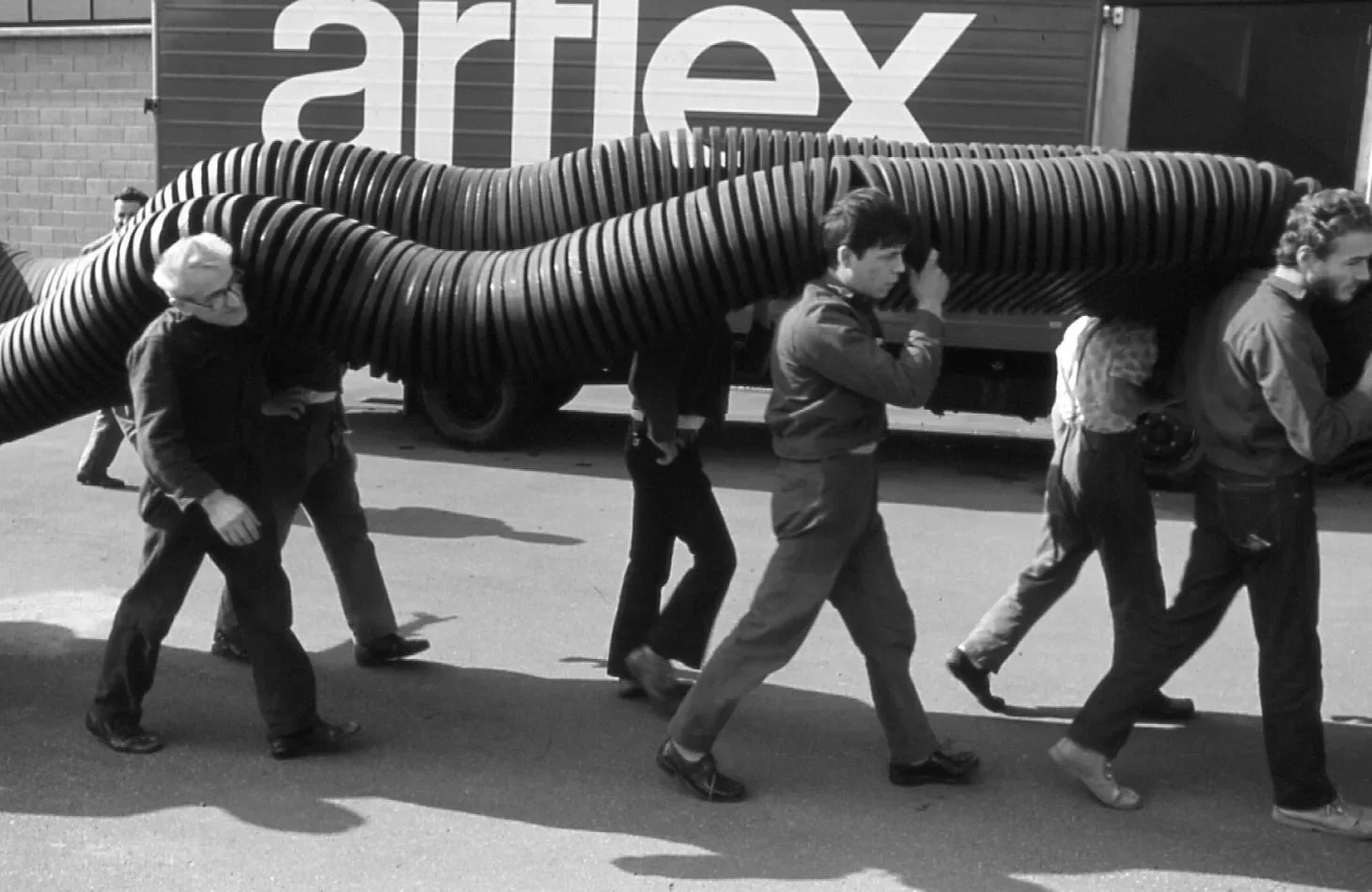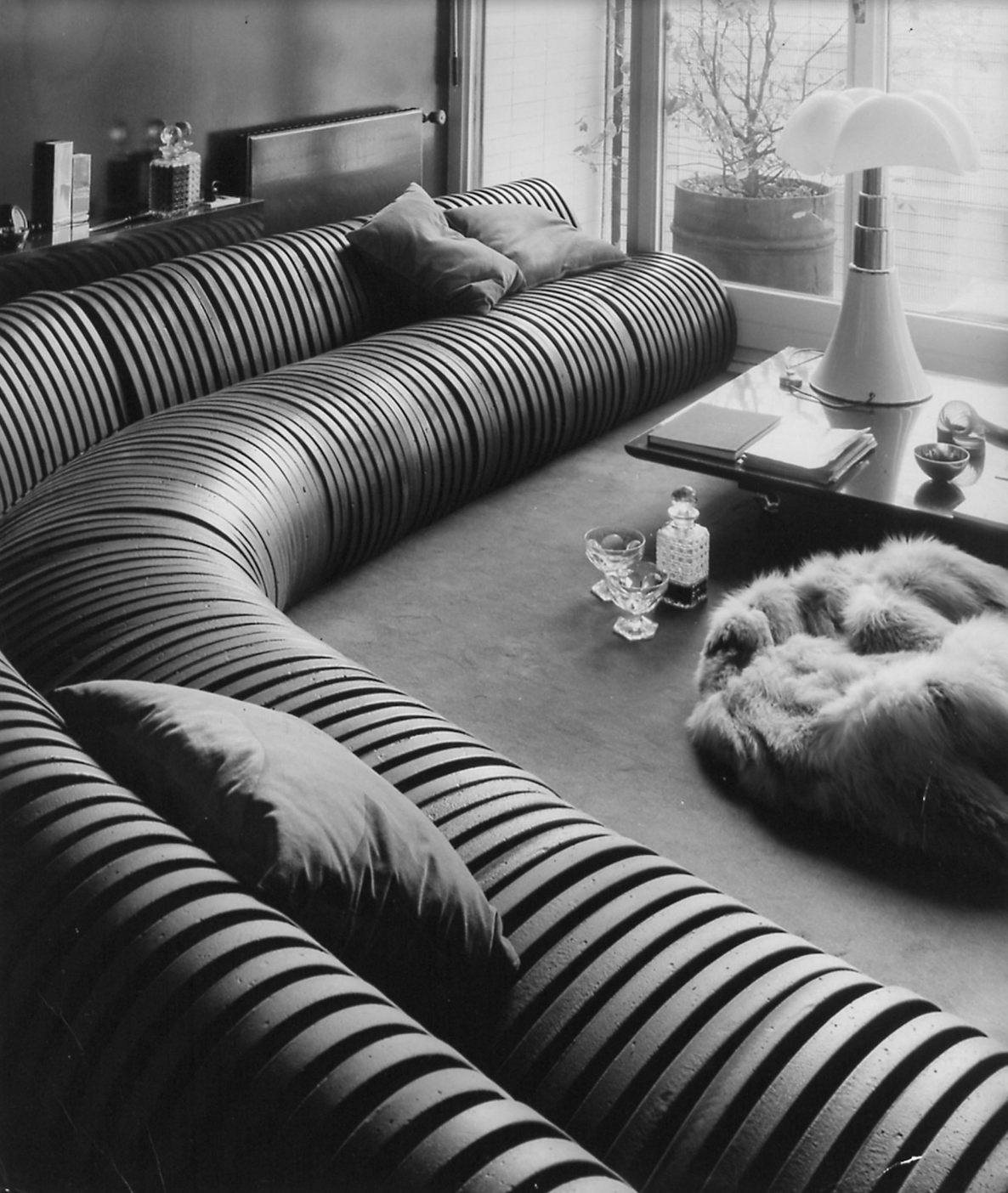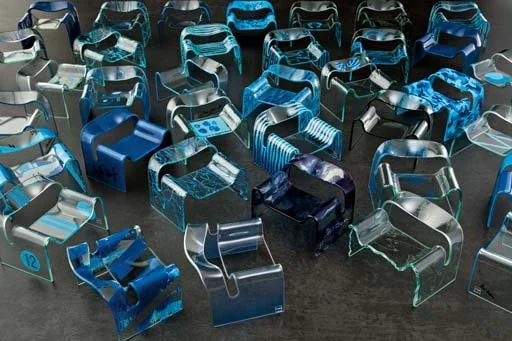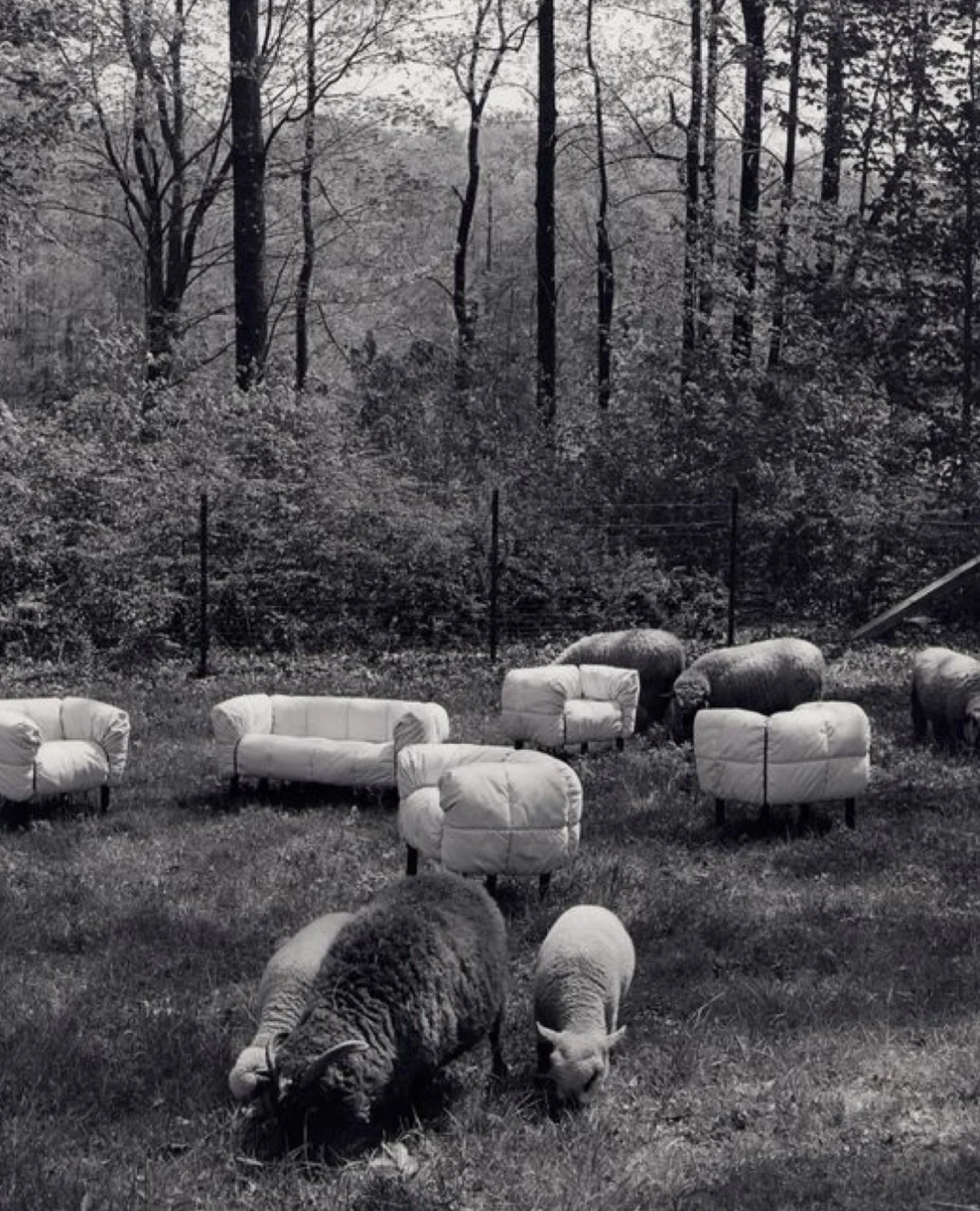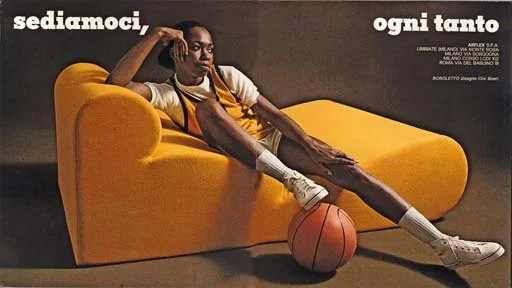CINI BOERI
1930 - 1971
CINI BOERI
Cini Boeri (1924 - September 9 2020), born Maria Cristina Mariani Dameno, was an Italian architect and designer known for her interest in functionalism and economy. She believed that beauty was the result of function and only took pleasure from adding useful, long-lasting architecture and design to the world. For her, the purpose of these objects, buildings and spaces, was to help people and make them happy.
Boeri graduated from Milan Polytechnic in 1951, alongside just two other female graduates. She took an internship at Gio Ponti's studio, before working for Marco Zanuso across architecture and industrial design until 1963, when she would set up her own studio, Cini Boeri Architetti.
Her interest in industrial design and economy – at every stage from materials, to technology and manufacture – perhaps grew from her experience growing up during World War II. As a daughter to staunchly anti-fascist parents, at just 18 years old she was couriering important documents across the country for the opposition, and even sewed herself a skirt out of parachute material.
Boeri was a leading female figure of the Italian Modern movement who explored ideas of expandability and pliability across several disciplines. Her architecture, furniture and lighting designs incorporate a breadth of materials, from formless foam to bent glass. One of few females in her class, she graduated from Politecnico di Milano and afterwards collaborated on several projects with architect Marco Zanuso.
Throughout the 1960s and 70s, Italy became an epicenter of the second wave of modernism, full of youthful spirit and new ideas. Boeri, a leader in the movement, was a contributing designer for Gavina SpA, an Italian design firm created by Dino Gavina to manufacture the work of designers from the burgeoning Italian design scene. Knoll acquired the Gavina Group in 1968 and introduced several of Boeri's designs into the Knoll portfolio, including the Lunario table series, an elegant cantilevered collection of tables made from glass and steel.
When the late, great Italian architect Cini Boeri was asked about the challenges of being a rare woman in the male-dominated world of 20th century Italian design, she explained how difficult it had been and how helpful other female designers were too her, one in particular - Franca Helg. “I remember it was Franca who urged me to open my own studio,” said Boeri, "and to do it before I became an indissoluble part of Zanuso.”
.
Good advice. Boeri forged a prolific and productive career after quitting her job with the architect and industrial designer Marco Zanuso to open her own office in 1963. Franca Helg did the opposite, by continuing to work as the trusted number two of the architect Franco Albini from 1951 until his death in 1977. By doing so, she had the opportunity to collaborated with a truly gifted designer for many years (so did he) on the planning and execution of such ambitious design projects as La Rinascente department store in Rome and subway stations for the Milan Metro. Doing so enabled Helg to constantly stretch herself by experimenting in new fields and with new materials and construction technologies, and to refine her design thinking.
.
Highly respected though she was by her peers, Franca Helg was never accorded the same credit or stature as Franco Albini. Working with such a successful male peer for so long may well have made her feel “indissoluble” from him, as she put it to Cini Boeri, which, due to the gender politics of the time, also rendered her less visible.
KEY DESIGNS:
Ghost Armchair (1987)
: Designed for Fiam Italia with Tomu Katayanagi, this iconic armchair is made from a single, 12mm-thick sheet of glass that is cut and bent into shape. The transparent design was meant to "blend into the surroundings while enhancing the room".
Strips Series (1972)
: Produced by Arflex, this modular sofa system features removable, padded covers like "sleeping bags". The design won the prestigious Compasso d'Oro award in 1979 and is featured in museums globally, including the MoMA in New York.
Serpentone Sofa (1971)
: Also for Arflex, this innovative seating solution is made from flexible polyurethane foam and was sold by the meter, allowing for unlimited and serpentine configurations.
Bobo Lounge (1967)
: Another Arflex production, this was one of the first armchairs to be made entirely of foam, without a rigid internal frame.
: Designed for Arflex, the Botolo is a distinct chair with a low profile and rolling casters, often upholstered in a soft, fur-like material.
Cibi Tumbler (1973)
: Created for Rosenthal, this elegant, sculpted glass tumbler appears as if it were carved from rock.
Lunario Table (1970s)
: For Knoll, this table's innovative shape with a glass top and polished aluminum base revolutionized table design at the time.
Architectural projects
Casa Bunker
and
Villa Rotonda
(1967): Designed as vacation homes in Sardinia, these projects demonstrate Boeri's ability to integrate buildings with the landscape. Casa Bunker is a Brutalist structure on a cliff, while Villa Rotonda has an elegant, snail-like shape.
Casa nel Bosco
(1969): Located near Lake Maggiore, this forest house was designed with a fragmented structure to avoid felling trees on the site, reflecting Boeri's environmental sensitivity.
Apartment on Three Levels
(2006): In central Milan, Boeri designed an apartment that reflected her belief in flexible, functional spaces.
EDS Italian Headquarters
(1997): An important commercial project by Boeri, this office building was constructed in Rome.



